When Thomas Edison built his first electric power stations, there were no electric meters in people’s homes. Lacking a better method, he started billing people a monthly fee based on how many light bulbs they had. It wasn’t a very precise system.

Electric meters (much like the ones we still have today) were soon developed to replace the bulb-counting system. As electricity comes into houses, a little dial turns forward to show how much is used. And while the original designers never considered this possibility, it turns out that the little dial turns backward when electricity leaves a home.
For most people, electricity only flows one way (into the home), but there are exceptions — people who use solar panels, for instance. In those cases, excess electricity created by the solar cells travels back out into the grid to be distributed elsewhere. And in some states, people can can be paid for this excess electricity. The practice is called “net metering” (referring to the total or “net” amount of energy used) and while it started off as a relatively non-controversial practice, there are now big political battles being fought over it.
In this featured episode of Outside/In, Sam Evans-Brown of New Hampshire Public Radio and his colleagues Maureen McMurray and Taylor Quimby explore the origins and evolution of this practice, which all began quite accidentally with a single individual: Steven Strong.
The Accidental History of Solar Power
In the mid-1970s, Steven Strong was hired to put a bunch of solar thermal panels (used only to heat water) on an apartment building in New England. While he was at it, he also added a few solar photovoltaic panels to the roof — these are the kind that create electricity and at the time, they were a brand new technology.
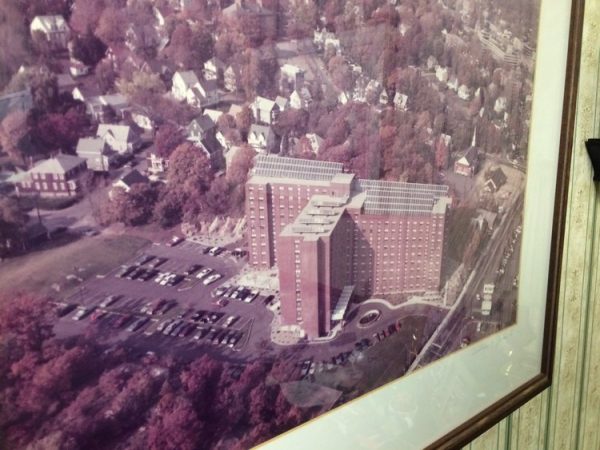
They were so new in fact, that when Strong installed them, he had to figure out how to wire them up — what to do with the excess energy that the panels created when the sun was out, but the building wasn’t using any energy. Strong decided he could send the excess electricity back out into the grid, and wire it so that the building’s electric meter would run backward as the electricity left the building.
At the end of the month, the building owners would pay based on what the meter-reader found on the dial, so if the building had used 60 kilowatt hours of electricity, but created 40, the meter would read 20, and they would only pay for 20.
Strong didn’t ask permission to wire up his solar panels this way, he just did it, and this is how the practice of net metering was born.
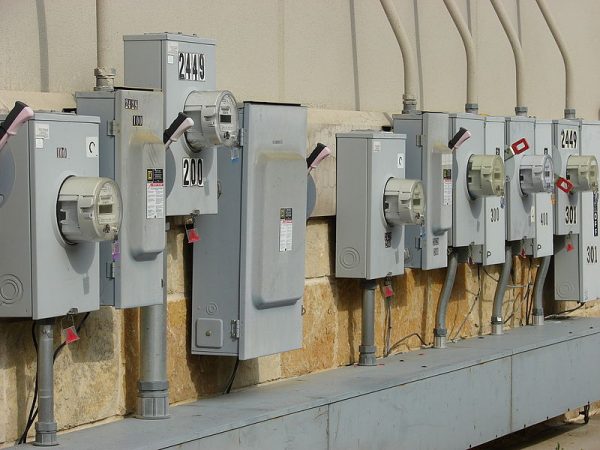
In effect Strong also decided what rate people would be credited for the excess power they produced with solar panels. By making the meters roll backward as electricity left the building Strong decided that the electrons his solar panels were producing were of equal value to the ones coming in.
In the decades following Strong’s first experiment with net metering, legislation was written in several states that put his idea into law: the energy leaving a home from solar was worth the same amount as the energy coming in. In other words, the electricity produced by solar panels was worth a retail rate, which was a higher rate than utilities companies paid when they bought electricity from large power plants.
And at the time, utility companies did not put up a fight about paying their solar customers this higher retail rate. Solar panels were expensive to install, and they never imagined they’d become accessible to enough people to constitute a threat.
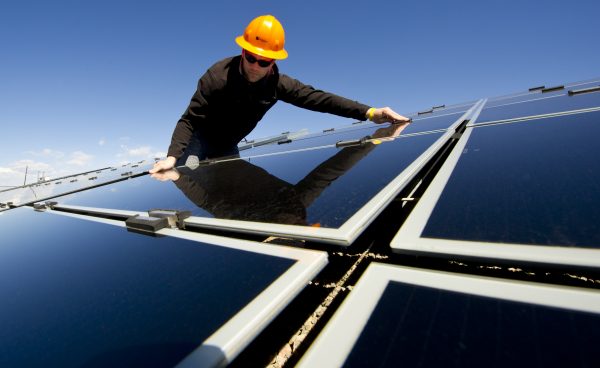
But then, in the early 2000s, installing solar panels began to get much cheaper. Today, the price of solar panels has dropped so much that they are no longer out of reach for the average home owner. As more and more people put solar panels on their homes and are paid a retail rate by the utility company for the energy they produce, the utilities have become increasingly uncomfortable with the even exchange they’ve been giving people who generate solar power. They believe these solar producers should be paid a lower (wholesale) rate for the energy they produce.
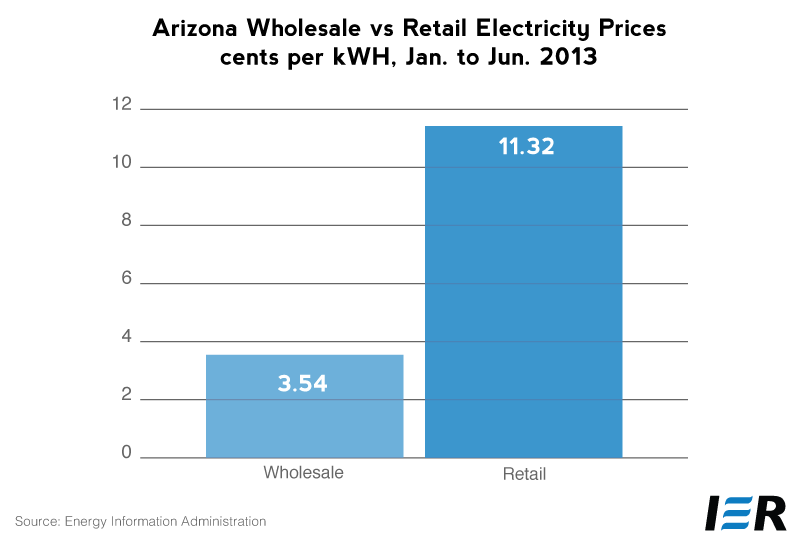
Huge political battles are now being fought all over the U.S. about what rate people with solar panels should be paid for the electricity they produce, and engineers and economists are starting to look at completely different solutions – like redesigning the electric meter to better reflect the true economic value of electrons at a given moment.
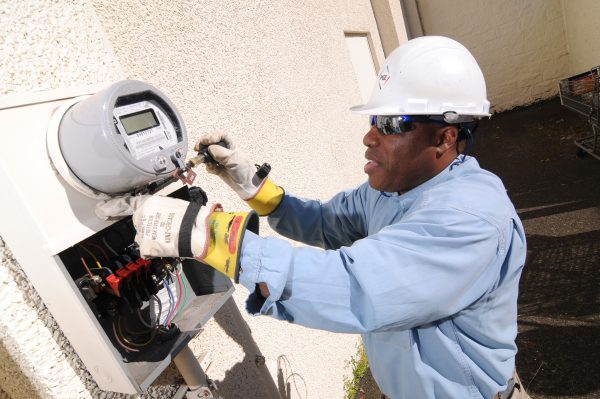




Comments (30)
Share
In New Zealand, we have a power company trying exactly this! flickelectric.co.nz – I have an app on my phone which shows me the spot electricity price (and also the current carbon output of the grid). I can make decisions accordingly!
I love every story ever published by 99%. But this report is faulty. None of this makes sense when you consider every major utility buys and sells excess capacity on the national power grid.
Renters who can form.their a co-op have significantly more leverage than McMansion hedge fund guy.
Isn’t the story here that utility billing is antiquated? Utilities bill not on cost or margin, but on differences in estimated use against estimated weather patterns across a geogrphical area? And oh, your meter can disrupt this pattern.
I don’t blame hedgefund guy for a $120 comcast bill just because he has a satelite dish.
I was surprised that no one mentioned the potential downsides of switching to a more time-differentiated payment system for electricity. Billing with lots of price changes depending on things like seasons, time of day, etc. – let alone charging actual hourly prices – would be really hard to understand for the average consumer, and would punish those that may be able to least afford to change up the time of their consumption. In many parts of Eastern Europe and elsewhere, they have a system where energy *is* more expensive in some hours and cheaper at night, and that pushes poor families (and usually the women in those families) to stay up late into the night to do their washing and other electricity-intensive chores. If you start chopping up the prices even more (e.g. by true spot price), then bills become harder to understand, harder to control, and harder to plan for over the year, which can again be hard for people for whom their electricity bill is a major household cost. If the suggestion is just INFORMING customers how much energy costs the utility at different times of day, that would be one thing, and I’m sure the well-educated, well-to-do people interested in energy efficiency would think that’s cool. But to actually charge people based on a rate that can change dramatically hour-by-hour? Well, that would have a lot of disadvantages for the poor, the less educated, or people who are just working too hard to figure it all out.
I am a big fan of 99% Invisible, but I must say that I am disappointed by the
“Reversing the Grid” story. It fails to mention the additional values of solar. In Austin, we rely on wind, nuclear, coal, solar, and natural gas power. Solar is completely renewable and clean. If we get enough solar in Austin, we can retire older dirty power plants (Fayette and Decker) that worsen climate change and pollute the air. By putting them side by side without mentioning these additional benefits, your story did not present a fair representation of the debate. Thank you.
I was surprised to learn that time-of-use pricing is only just being proposed as a solution to this pricing problem. Time-of-use rates have been in effect in Ontario since 2006!
So glad someone else mentioned this. Just catching up on my podcasts and was also very surprised to hear that time of use rates were being discussed as a far-out solution given that we’ve had it for so long in Ontario. I guess we’re just living in the future up here.
There are two solar vendors and you don’t distinguish between the two. J own my panels; I see myself as the “mom and pop” that you describe. The amount of power that I contribute to the grid is probably small. Many of my neighbors lease their panels. The panels are owned by one of the 3 locals companies that set up leases. They can be considered wholesalers. As the tax benefits are phased out, many people are leasing now–not buying. Will that distinction help the local power company?
The power companies should also consider that some of my neighbors already have battery backups. After a recent hurricane, I viewed their lighted homes jealously. Don’t they fear losing us altogether? (And why aren’t they building panels?)
my electricity bills contains 2 cost
1- energy charges (net energy charges )
2- supply service charges (1 dolar per day no matter what)
even if my net cost is 0 I am still connected to the grid and benefit from it. that means I will be paying the cost of maintaining that grid
this simplifies what I am paying for what
for the energy charges demand base meter management make sense too, as long as it is well regulated.
This is great info and brings up the point few consider: The cost of energy is small compared to the long distance transmission and local distribution costs to get it to location – those lines and transformers and the staff to keep them all working is very costly, not to mention the FERC/NERC regulatory compliance costs. There is the side benefit of getting to “bank” energy for “free” in the grid and get it back on par when you need it. This is a really bad arrangement if you bank during offpeak and consume during peak (fortunately, solar output mostly follows the load curve). Don’t want to pay the service connect fee? Then disconnect from the grid and see what a local battery system costs to purchase and maintain.
Time of day billing for the consumer is unfair to the poor. They will have to adjust their lives – when they watch TV, when they do laundry, etc – while the rich and middle class will be able to afford living their lives when they want.
Also, how about this. Use net-metering at retail prices until the consumer reaches zero. If at the end of the month, they are below zero, that is the power utility owes them, then the utility buys at wholesale prices, but if they owe the utility, all electrons are equal, and the consumer only pays the simple difference.
I used to work for the local power company. Time-of-use meters used to cost a fortune so they were only used for businesses. The price must have come down because during a brief contract in Florida, I learned that one power company was changing out every meter in the city to make it a time-of-use meter. The meters could also be read remotely and that was the primary reason they were being replaced.
I’m an electrical engineer for a utility, and I have to say this is a well-done episode. As you can imagine, many of the issues regarding fair billing and potential solutions go much deeper than discussed.
But from my perspective, it boils down to this concept: Customer billing should based off the cost to serve the customer.
That being said, the majority of the costs to serve a customer are not based on energy, they’re based on demand (the burden the customer contributes to the monthly grid peak). What does that mean? The grid is built for a certain peak capacity. If the grid demand exceeds capacity, black outs occur. Just imagine if our interstate system was built in the same way, to never have traffic jams. You would have 20 lane stretches that are typically underused but are build for that 1 hour of the year that demand is maxed out. So for the electric grid, the question is: how much does it cost to serve the customer to their full demand any time of the day?
Example. Many regional grids are winter peaking, at 7:00AM. Most solar customers would not be contributing any power back to the grid, but they would be demanding power at that peak just like every other customer who doesn’t have solar. So since the utilities assets exists to serve both solar and non-solar customer alike, is it fair that the solar customer pays significantly less that the non-solar customer?
This ins’t a perfect argument, but it just provides a different perspective. Again, great episode. I appreciate 99IP tackling this issue in depth and not as, “solar good, utility bad”.
In Chicago, consumers have had the ability to purchase electricity on the real-time market (with 5-minute pricing) for almost a decade now. It’s not something an MIT professor is just wishing for.
I think it’s great that 99% aired this podcast, but I agree with some of the comments above. For starters, there was really very little discussion about the environmental benefits of supporting a solar economy vs the other sources the utility would be buying from, ie coal. That, to me, is an incredibly strong argument in favor of solar. Secondly, while you talk about companies like Solar City who install for free, you don’t then say “See, now it isn’t just for rich doctors.” Finally, there seemed to be two stories here, one about net metering and one about smarter billing, the second issue isn’t of all that much interest and I didn’t quite sense how the two were linked. What I like about 99% is that the stories have focus, this one seemed a bit rambly. But, really, I’m being rambly. I should have just focused on the first point – we need policies like Net Metering that will make a photovoltaic economy much more pervasive. A stronger solar economy means a weaker carbon economy.
While I enjoyed this episode, I find it disappointing that the narrators seem to dismiss photo-thermal energy systems as something, low tech or even laughably simple. I’m no industrial chemist, nor am I a materials engineer, but there is nothing trivial or low-tech about creating flexible tubing that can not only sit in the sun all day for years but also intentionally absorb and convert energy from the sun and transfer it to a liquid that is cooler than the outside of the tube.
Just because something is about computers, the Internet or your iPhone, don’t assume that it is high tech. And just because something is about farming, steel, or just old, don’t assume that it is not.
I look forward to the next episode of 99% Invisible.
This is what struck me, too. They actually said that using the energy of the sun to directly heat water was ‘stupid’, and then within two minutes mentioned ‘heating water’ as one of the useful things you could do with the electricity that you’d just generated through the use of photovoltaics.
…I mean, hello? No mention of efficiencies of energy transfer? Or the relative embodied energy / carbon footprint of either of these technologies? Or the costs of installation or maintenance? I know the episode was really more about billing structures relating to electricity only, but as long as we keep thinking ‘energy’ means ‘electricity’, we’re missing out on a lot. It’s probably different in parts of the US, but here in Scotland a VAST proportion of the energy we use in our homes goes into heating water.
This episode could have actually helped peoples’ understanding of these issues but instead it perpetuated some common MISunderstandings.
Thank you! I almost rage quit the podcast after that segment. Heating water is one of the most efficient ways to harness solar energy (after passive solar house design :), and should definitely be considered even before installing photovoltaic panels. Hot water is also easier to store than electricity.
The downside is that these systems are more complex to retrofit in an existing design.
Their dismissal of solar-thermal raised my ire as well. Where I live in Canada, solar-thermal is much more economically viable than photo-voltaic.
Exactly, Dave Morris! It reminds me of people who think hydrogen powered cars are the future and not these “impractical” electric cars (like certain clowns on a certain British television program about cars).
After all, where do you get hydrogen? As I’m sure you all know: electrolysis. Which requires a great amount of electricity, which presently we get from natural gas, nuclear power, and coal.
Thank you. I came to find this website specifically to comment upon the insulting tone with which the narrator and other voices on the podcast spoke about early solar efforts. In the 1970s, when I was in elementary school in Berkeley, CA, I was really interested in solar power. Solar power was a big deal, and the things you are mocking now were really exciting to a 5th grader at the time. I was so excited about what was going on around me (this was Berkeley, after all, where more people knew about solar options than in other parts of the country) I did my school science project on solar power–I was just a regular kid with no special science skills, and using the information out there I built a model of a water desalination system using solar power, and the things I learned about solar power at that time–the same things that your narrators laugh at–were the FOUNDATIONS of what solar has become today. The scientists working in the early stages of a technology are not idiots. They are pioneers. And they have been fighting for decades against a hostile energy industry. How can an industry that is being actively forced back by powerful interests be expected to thrive–or even survive?? The fact that those early innovators were doing anything at all is impressive, and their efforts should be praised, not mocked.
The people who made this podcast need to learn how to tell a story . The constant banter from the ancillary story tellers is like nails on a chalkboard. Sorry if you never had the joy of using chalk in school . A better way of saying this for people your age is ; it’s like someone calling you on the phone as asking what instagram is for .
I am a huge fan of 99% Invisible, but this episode does not measure up. It is in the public interest to produce energy domestically, and in Vermont’s case “domestic” means in-state. With a population of 630,000, a $5+ billion cost of imported energy bleeds our local economy, while contributing to a purported need for a $600 billion a year military budget largely to defend America’s petro-state “allies”. Al Qaeda attacked the US in 2001 in response to American troops being stationed in Saudi Arabia.
That is just one of the numerous external costs that are borne by the public for the use of fossil fuels. Our healthcare costs, water and air quality are affected by fossil fuels that I do not consume. Fossil fuels receive a long list of tax preferences that do not filter down to these who forgo the use of fossil fuels.
By the way, using thermal transfer to heat hot water is not “stupid”. That comment typifies the substandard and jive quality of this episode.
It is not a new thing, in Ontario Canada we have smart metering and time of day price for at least 10 years not. Also we can ask for a free installation of a small gadget in my living room that shows how much a kWh of cost at Any moment in time.
It is doable and has been done for a long time.
Agreeing with Mark – the constant giggling, unnecessary comments, superfluous asides, and ‘question as exposition’ made this completely unbearable. I lasted halfway though. Interesting subject, awful delivery. Pun intended.
The presenters are off to a good start, but like others above, some aspects of this 99%I segment bothered me enough to comment. Like Daniel P above I was disappointed at the way the cast dismissed Solar Thermal as “stupid”. (3:43-4:39) Replacing 80% of an apartment building’s water heating requirements is pretty significant. Installing Solar Thermal on the White House was a promotional event to help the public see that the current agenda was not the only possible agenda, that everybody needed to focus on change, and that the President could live up to his own standards. It would have been interesting to ask whether the people who are the current front runners in solar advancement had their interests ignited by the “stupid” tech of the 1970’s. The giggling cast came off here sounding like proverbial millennials who have yet to pay a utility bill.
Another aspect not touched on is Elon Musk and his Powerwall storage (or any competitor?). Rather than returning electricity to the grid, electricity generated by the homeowner can also be stored in batteries so their off-peak excess can be used in dark peak times. A system based on 1893 tech where entire city blocks can still routinely go out, illuminate the need for non-centralized individual battery backups, web distribution and alternative energy sources.
Another great example of 99pi poking around in interesting corners to get the conversation started. This is a HUGELY important issue, because our society cannot survive without reliable electricity, so we have to find a way to pay for the infrastructure and the ongoing costs. Conversely, we cannot survive with the 1960s version of electricity generation and pricing.
What’s so encouraging is that every country is struggling with this issue, so we have this worldwide lab of policy responses, not to mention the internal lab of 50 states in the US. And from what I’ve observed, countries and states are actually learning from each other.
I agree with many of the other comments that the uninformed banter was distracting from the good information. What purpose does someone who doesn’t understand what a kilowatt-hour is have in this episode? It made me trust the information less wondering if those in the studio knew what they were talking about and if the proper amount of homework was done.
Of the dozens of episodes I’ve listened to, this one tanks to the bottom 5% by delivery despite it being very interesting subject matter.
I have 8 years experience in Electricity Utility industry and found the article is a good introduction into the topic.
I think one huge cost that was failed to be addressed is that of the Distribution Network which is no longer used and makes up to 50% and growing contribution to one’s electricity bills.
These networks are being built to transport electricity from the generators to the homes and are scaled to the capacity that cities need, not the usage. I.e. for those one or 2 hot days when everyone wants to be able to turn their aircons on. The days where the size of residential PV systems aren’t big enough.
So, when you are exporting electricity back into the grid at a full retail price you are being compensated for network costs that you never had to bare. You are only putting power back into the grid. This is why this is not sustainable, because the utility then needs to use the grid to sell the generated electricity to another customer but isn’t able to be compensated for it.
This will contribute to the reinforcing cycle mentioned on the podcast and ultimately in my opinion force the utility companies to change their revenue models from usage to usage and capacity models, similar to broadband i.e. 40GB @ 8MB/s. So if you want to run four aircons you’ll pay for the capacity, which is really much fairer than the model utilities are opting for now.
Interesting episode! In Canada (specifically Ontario), we are billed based on the amount of energy used at various times of the day. “Peak” times are a higher fee, and “super peak” times are even higher. As well, you have the option of receiving a monitor that will tell you how much energy you are using, and what it is costing you based on time of day and amount being used (I have attached a photo here: https://www.dropbox.com/s/l0o6qfp336bwtp8/IMG_2947.jpg?dl=0).
Our system certainly isn’t perfect, and it has been a constant battle between consumers, utility companies, and the government, but there are some great resources that I think consumers simply need to be more aware of to be more efficient in usage and balance their utility bills.
Actually eletricity does not flow into or out of houses at at because we use alternating current..